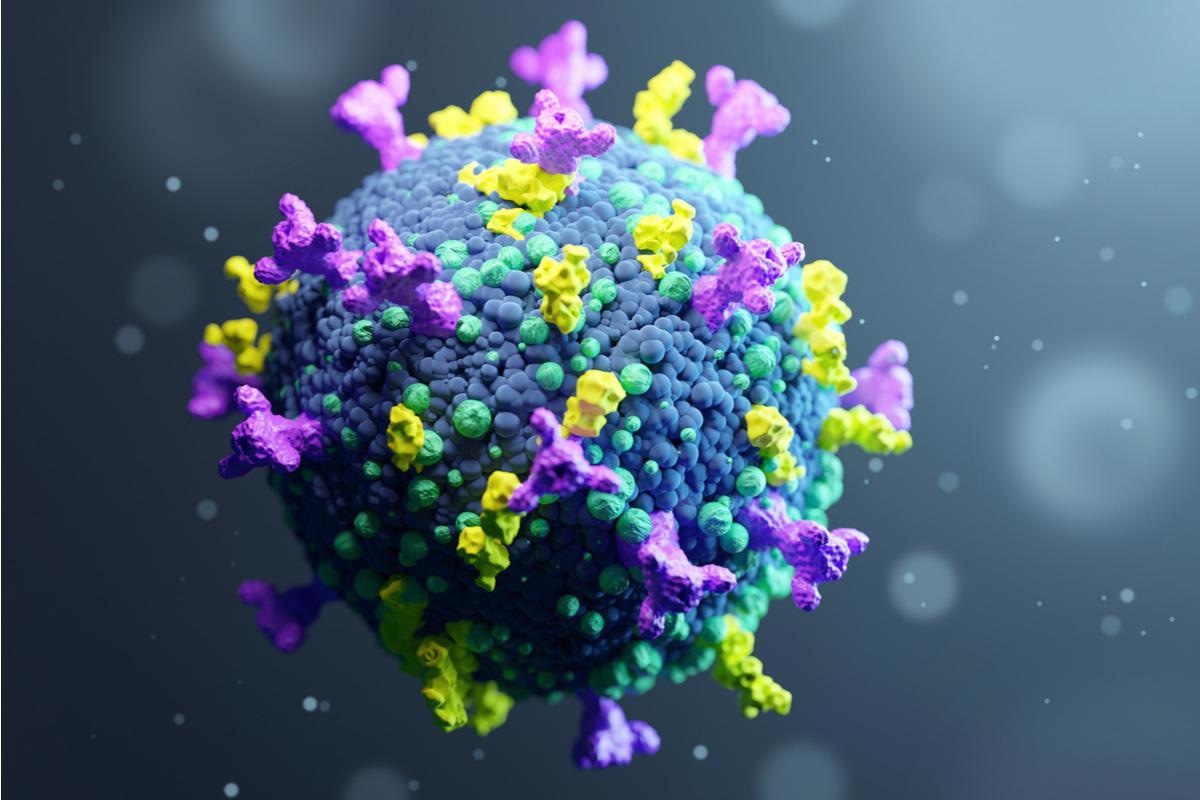Since the start of the coronavirus disease 2019 (COVID-19) pandemic, many governments have both imposed and removed lockdowns measures. With mass vaccination schemes in developed countries, the risk was assumed to be reducing. However, many new variants continue to appear, and the instance at which vaccine breakthrough infections occur is rising.
 Study: The structural role of SARS-CoV-2 genetic background in the emergence and success of spike mutations: the case of the spike A222V mutation. Image Credit: solarseven/Shutterstock
Study: The structural role of SARS-CoV-2 genetic background in the emergence and success of spike mutations: the case of the spike A222V mutation. Image Credit: solarseven/Shutterstock
Researchers from the Centro de Investigaciones Biológicas Margarita Salas have been investigating one of the mutations that typically appear in the Delta variant. A preprint version of the study is available on the bioRxiv* server while the article undergoes peer review.
The study
Most variants show mutations in the spike protein, specifically the receptor-binding domain (RBD) of the S1 subunit. The RBD binds to angiotensin-converting enzyme 2 (ACE2) to permit viral cell entry. Many mutations present in variants of concern alter the conformation of the spike protein: as a homotrimer, each of the individual monomers can take two positions ‘up’ and ‘down.’ These mutations tend to alter the proportion of proteins that take each position.
S:A222V was first seen in a Spanish sublineage of SARS-CoV-2, B.1.177, in 2020 and has since been observed in almost 300,000 sequences in 123 countries. It occurs almost exclusively alongside another mutation, S:D615G. It has spread to multiple other sublineages, including around 10% of Delta lineages. It has also been seen in the Alpha variant.
The researchers focused on Delta sequences with S:A2227 in different sublineages: AY.4.2, AY.4.9 AY.26, and AY.27. S:A2227 is present in over 95% of these sublineages when sequences. When S:A2227 first appeared in the Delta variant in March 2021, it showed up in 17% of sequences, rising to 23% by April before dropping – primarily as more sequences were classified as sublineages of Delta rather than the parental lineage.
To evaluate the possibility that S:A2227 is being positively selected for due to an improved ability to replicate in immune populations, the researchers examined the ability of pseudotyped viruses with either the wild-type spike protein or a spike protein with the S:A2227 and S:D164G mutations, known as 20E. The researchers found no significant difference in the ability of antibodies from sera collected before the S:A2227 mutation was circulating to neutralize either spike protein.
The scientists then moved on to in vitro assays, using the ectodomain of the spike protein that corresponded to either the wild-type variant or lineages carrying S:D614G or S:D614G and S:A2227 mutations that had been flash purified.
Thermal shift assays were used first, showing that both variants carrying mutations had very similar half-melting temperatures and were slightly more stable than wild-type. Protein-protein interaction assays by biolayer interferometry revealed the impact of spike protein-ACE2 binding capacity. Once again, the two variants carrying mutations showed higher binding affinities to ACE2 compared to wild-type. Both variants showed similar dissociation constants, but results suggested structural differences between them may lead to the S:D614G and S:A2227 variant RBD showing higher accessibility.
To further explore this, the researchers determined the cryo-EM structures of both spike proteins and combined them with classical molecular dynamics (MD) simulations. The samples showed that around 50% of particles followed the typical 1-up conformation seen in wild-type, with a significant proportion of two-up and three-down. In the S:A22V mutation, the V222 residue is in a highly hydrophobic environment in the N-terminal domain, and this is expected to alter the interaction of the subunit with CTD1. Generally, both strains showed very similar structures, with only small conformational changes in the N-terminal domains and RBDs.
The researchers used principal component analysis to analyze the MD simulations, focusing on a single S1 subunit. This revealed 82% of the structural variance within the conformation of S1. The first eigenvector largely describes the fluctuation of the RBD from the closed to the open state. The closed states of both mutants overlap significantly, but the open state of the double mutant shows a much greater variety of conformation. When calculating the principal component analysis using RBD atoms, the researchers discovered that the open RBD of the double mutant showed a bimodal density distribution. The left side of this overlapped with the unimodal distribution of the single mutant.
The conclusion
The authors highlight that their report reveals serological, functional, and conformational changes resulting from the S:A222V mutation. They show that it promotes increased RBD opening and increases ACE2 binding compared to both wild-type and the parent clade. However, the presence of the mutation does not reduce the capability of sera taken from individuals who have not been exposed to it previously to neutralize pseudoviruses, indicating that it does not reduce the effectiveness of vaccines. This information could be very helpful for public health policymakers and healthcare workers and allow them to make informed decisions moving forward.
*Important notice
bioRxiv publishes preliminary scientific reports that are not peer-reviewed and, therefore, should not be regarded as conclusive, guide clinical practice/health-related behaviour, or treated as established information
-
Ginex, T. et al. (2021) "The structural role of SARS-CoV-2 genetic background in the emergence and success of spike mutations: the case of the spike A222V mutation". bioRxiv. doi: 10.1101/2021.12.05.471263. https://www.biorxiv.org/content/10.1101/2021.12.05.471263v1
Posted in: Medical Science News | Medical Research News | Disease/Infection News
Tags: ACE2, Angiotensin, Angiotensin-Converting Enzyme 2, Antibodies, Cell, Coronavirus, Coronavirus Disease COVID-19, Enzyme, Genetic, Healthcare, in vitro, Mutation, Pandemic, Protein, Public Health, Receptor, SARS, SARS-CoV-2, Spike Protein, Vaccine

Written by
Sam Hancock
Sam completed his MSci in Genetics at the University of Nottingham in 2019, fuelled initially by an interest in genetic ageing. As part of his degree, he also investigated the role of rnh genes in originless replication in archaea.
Source: Read Full Article
